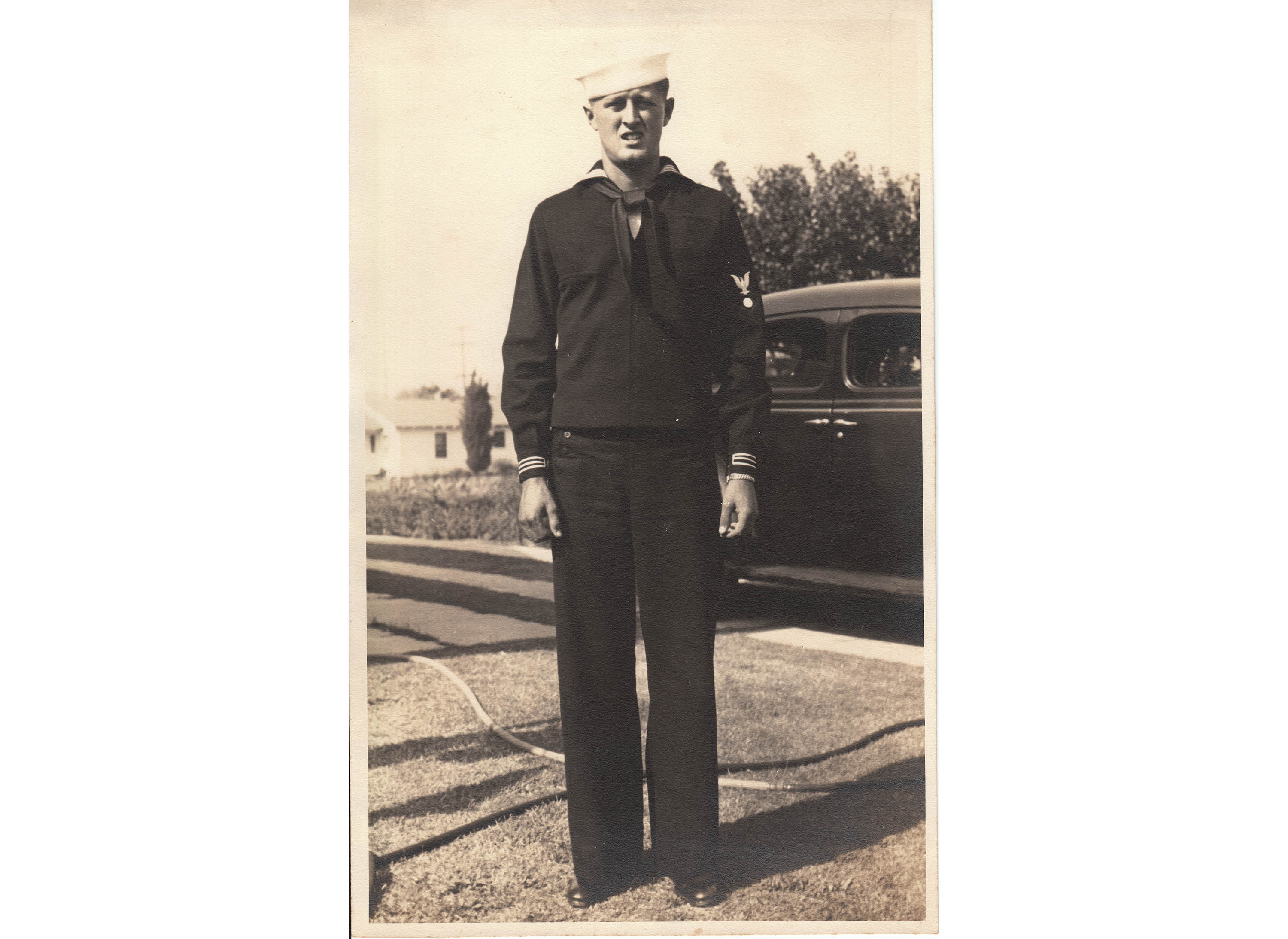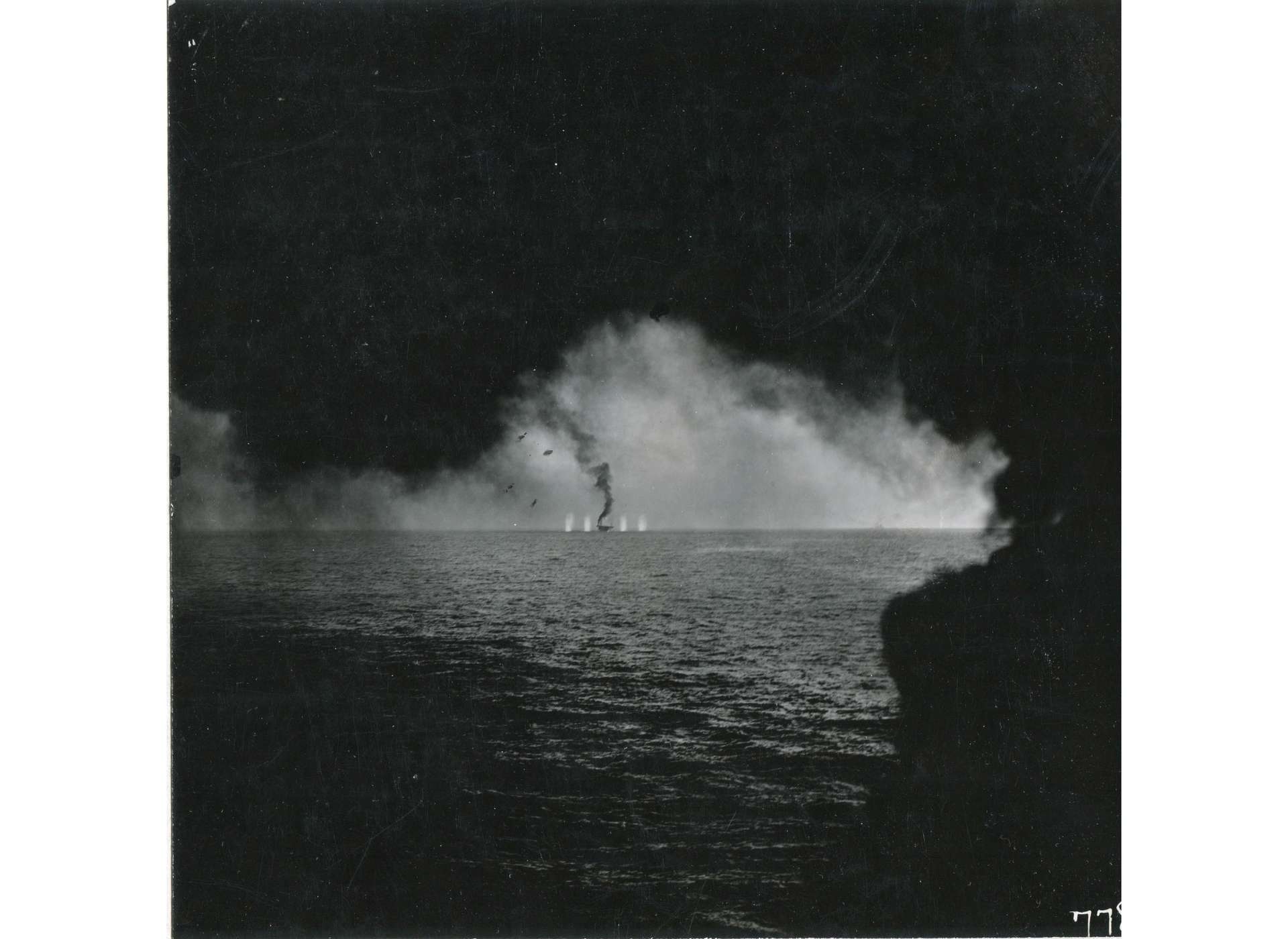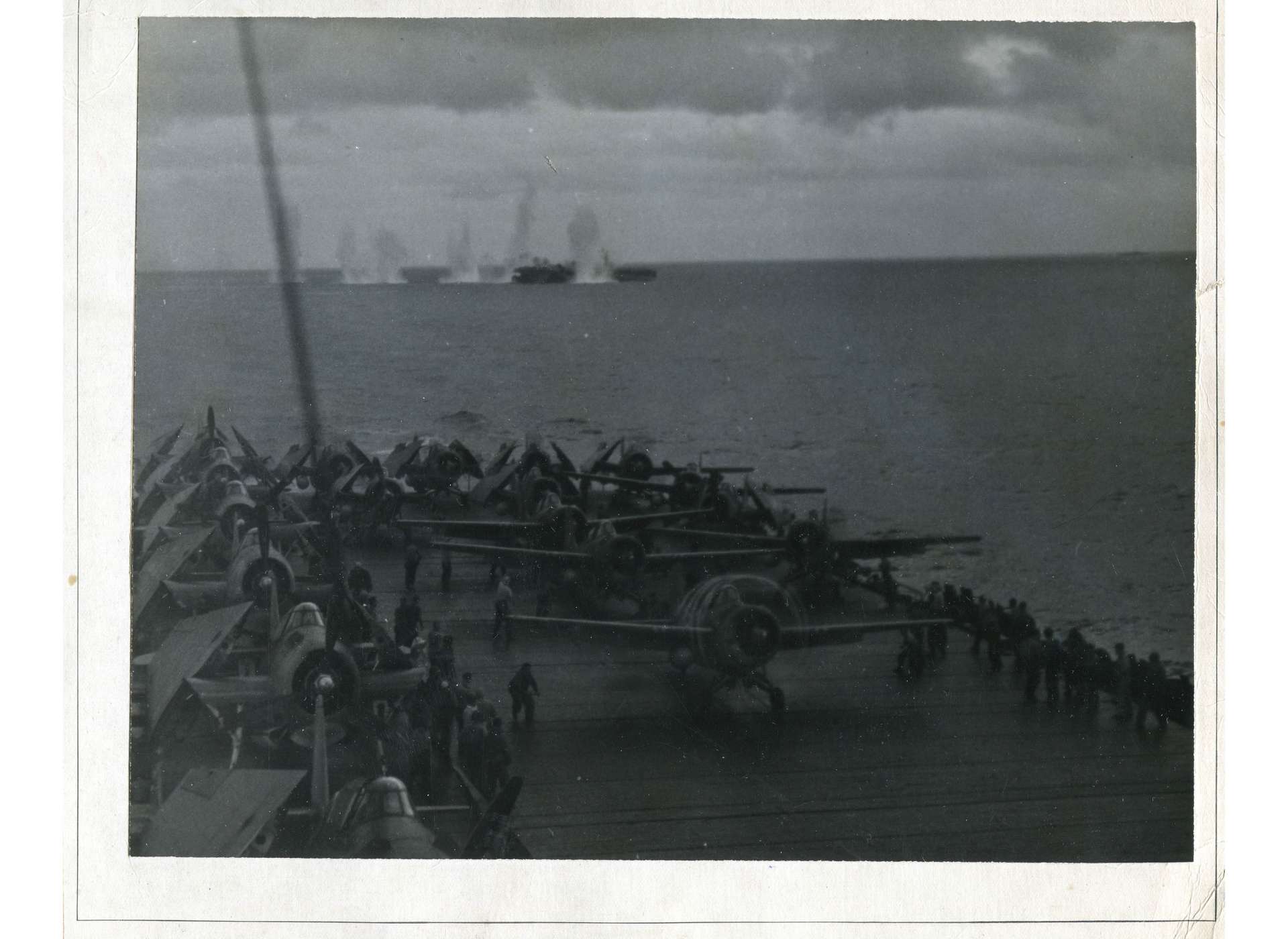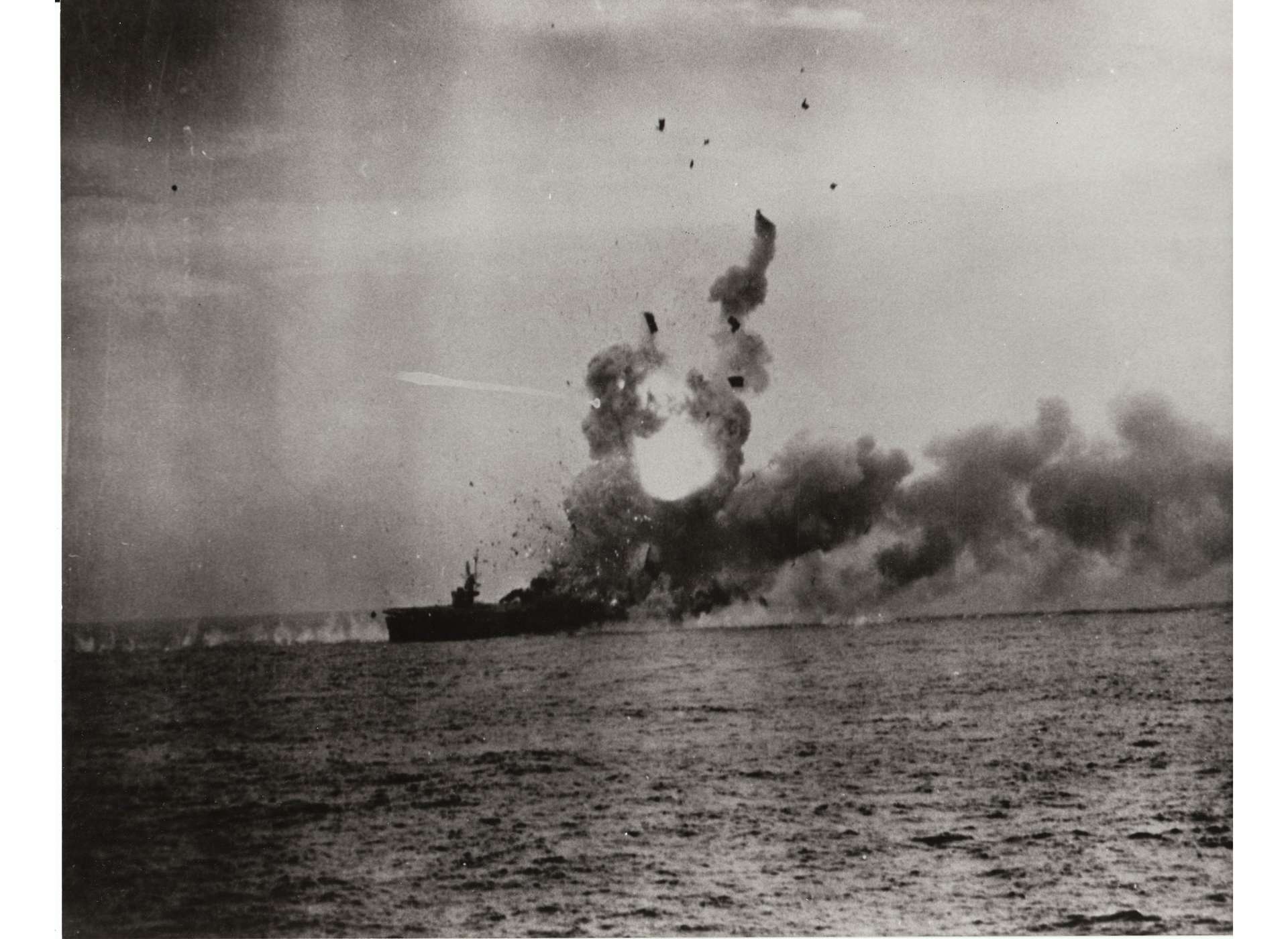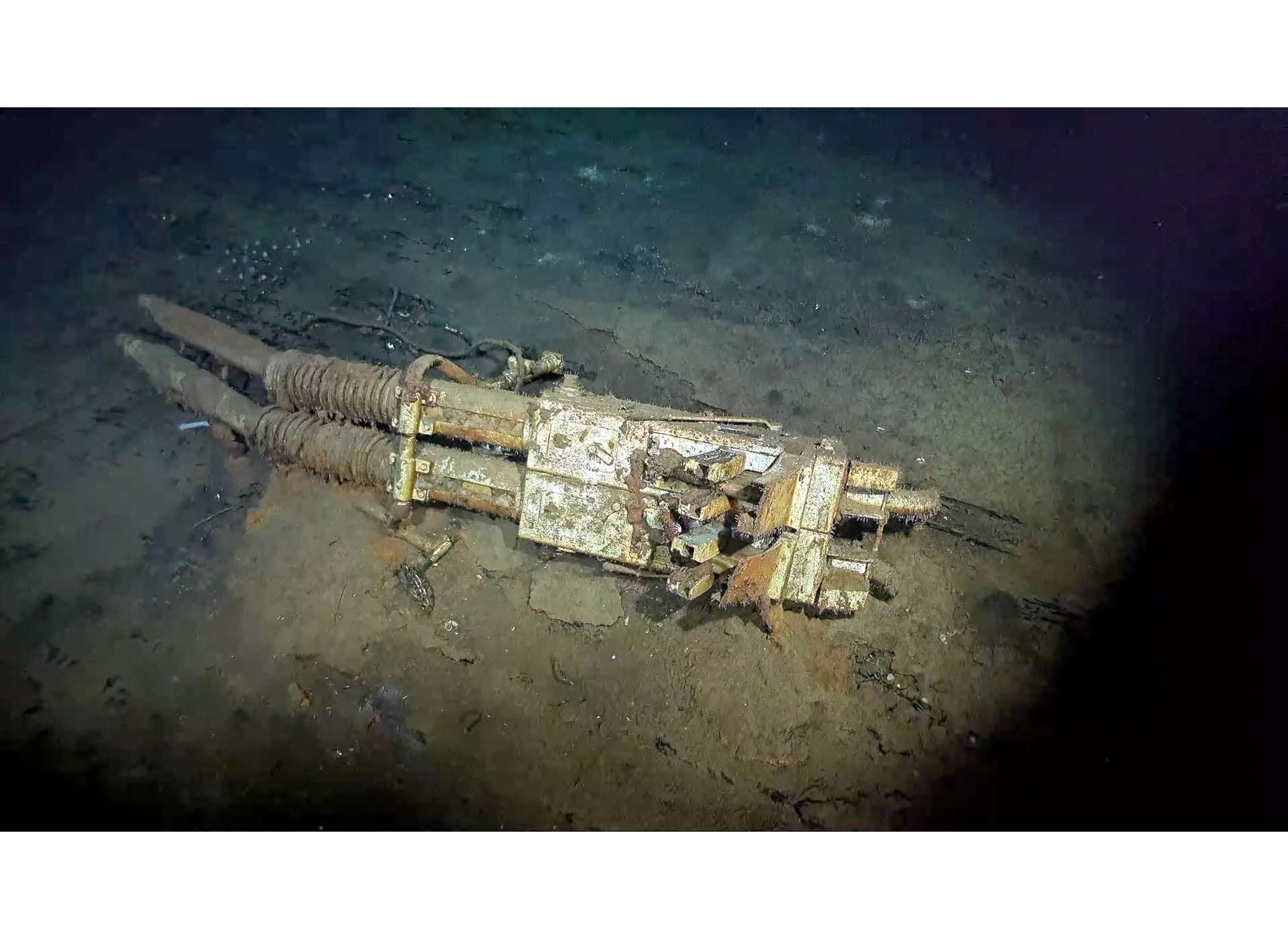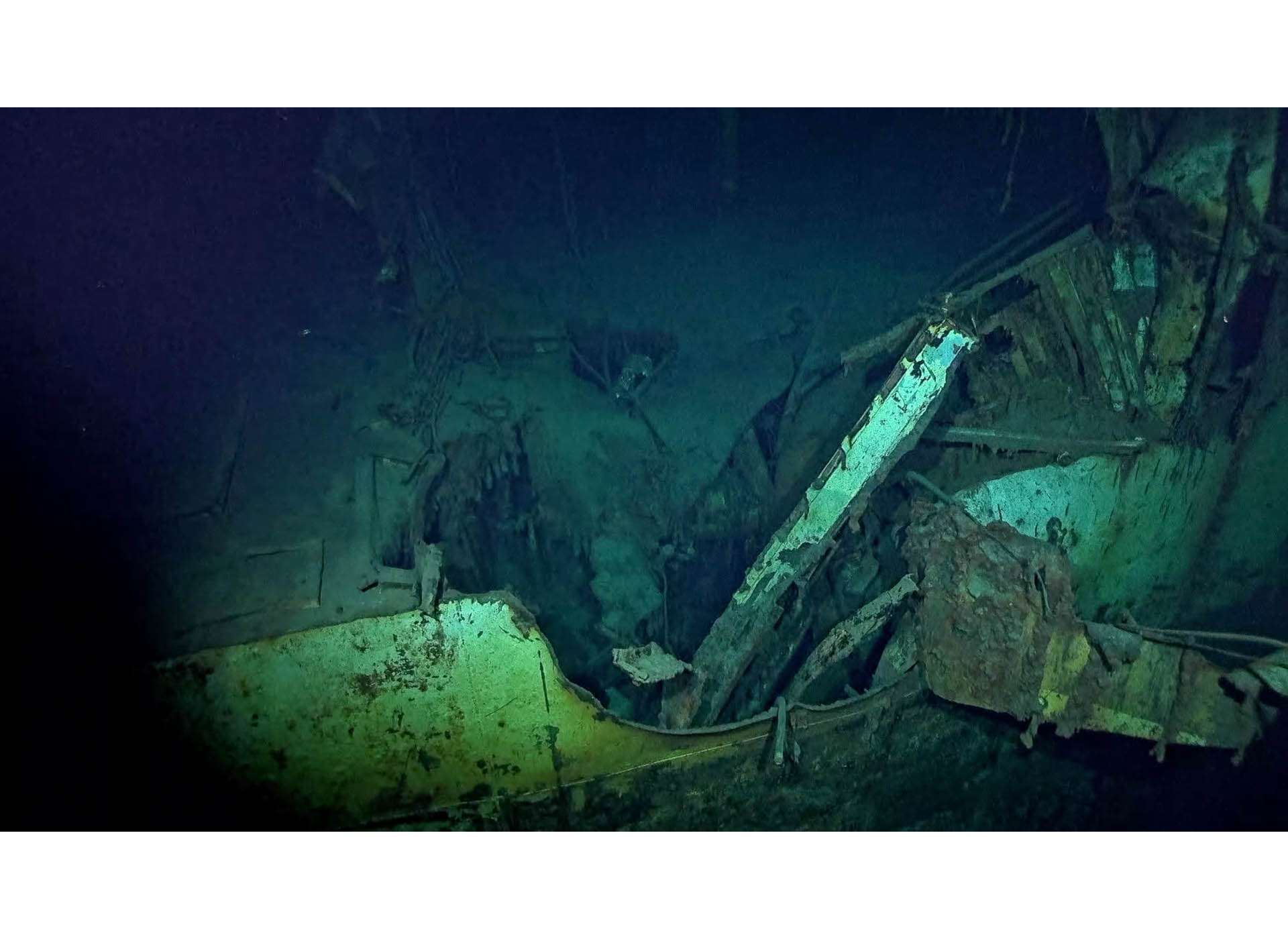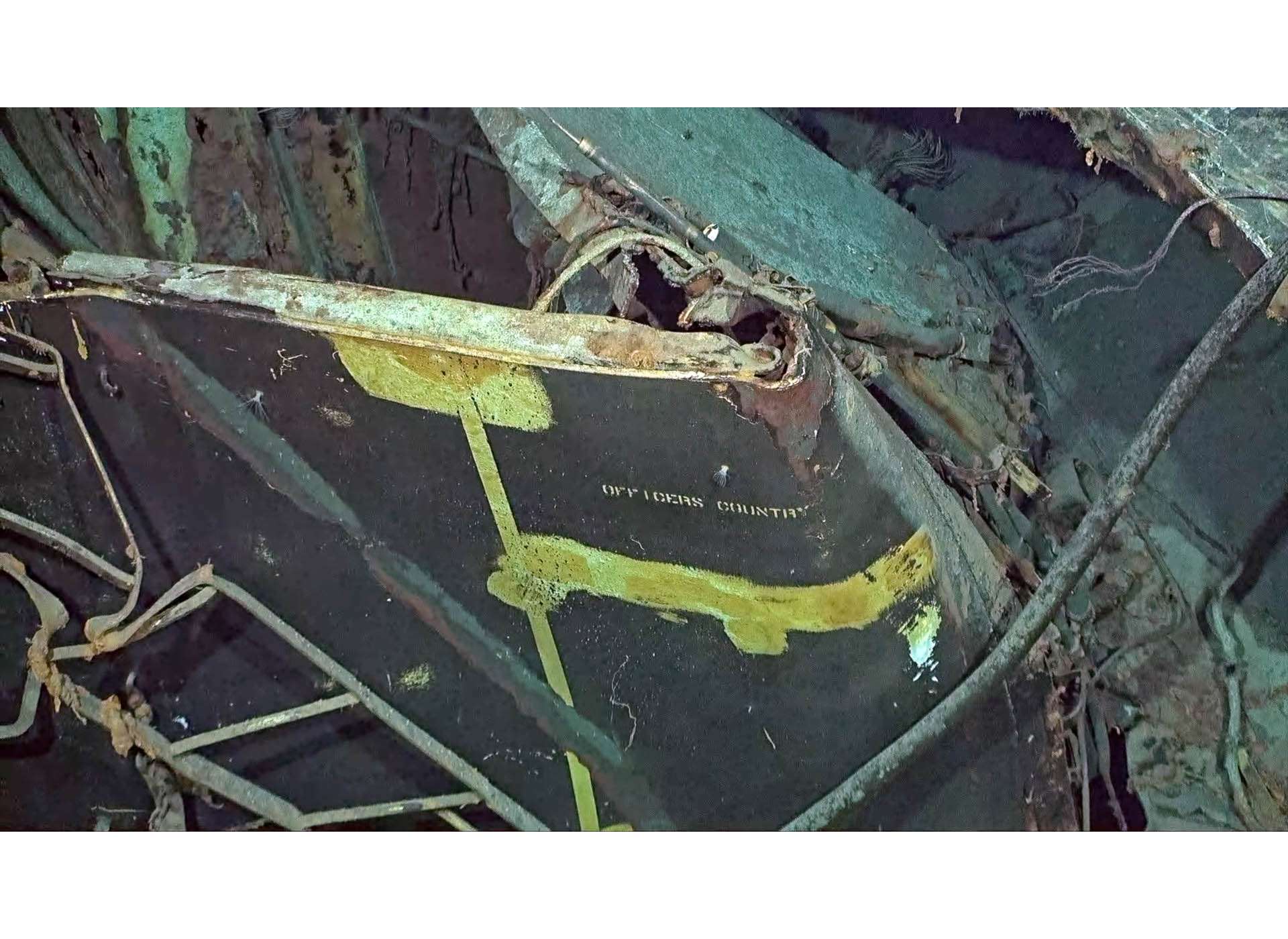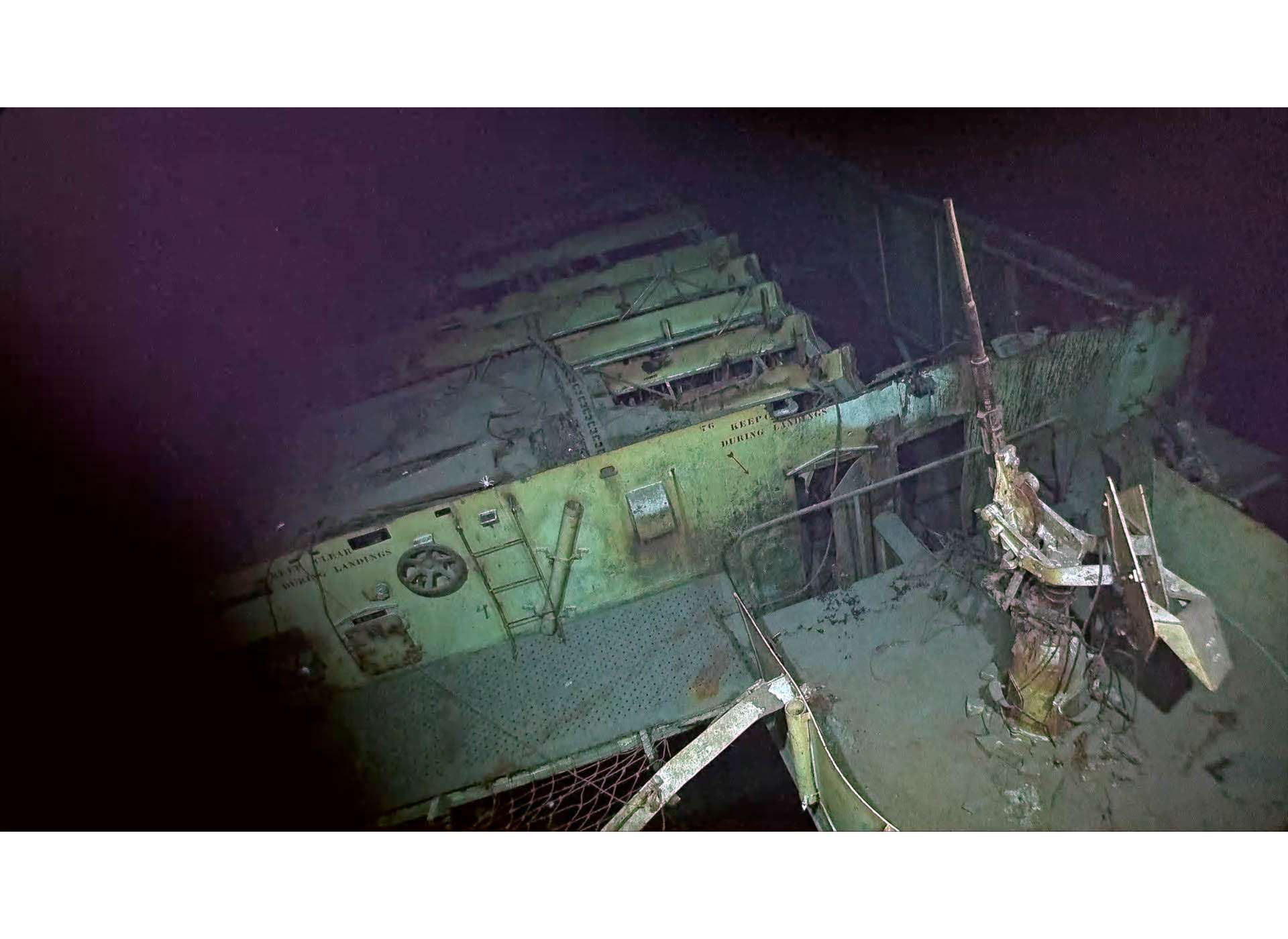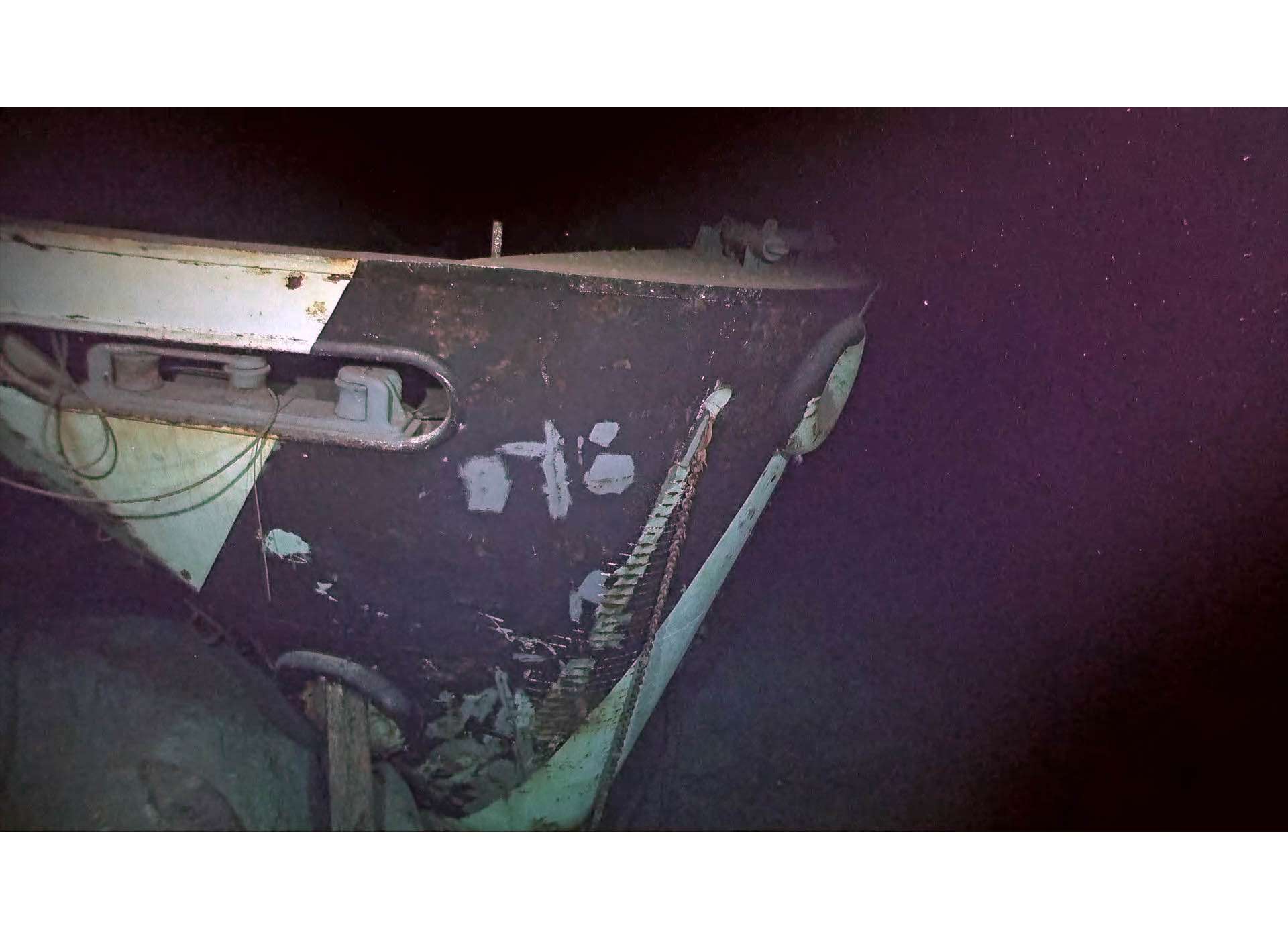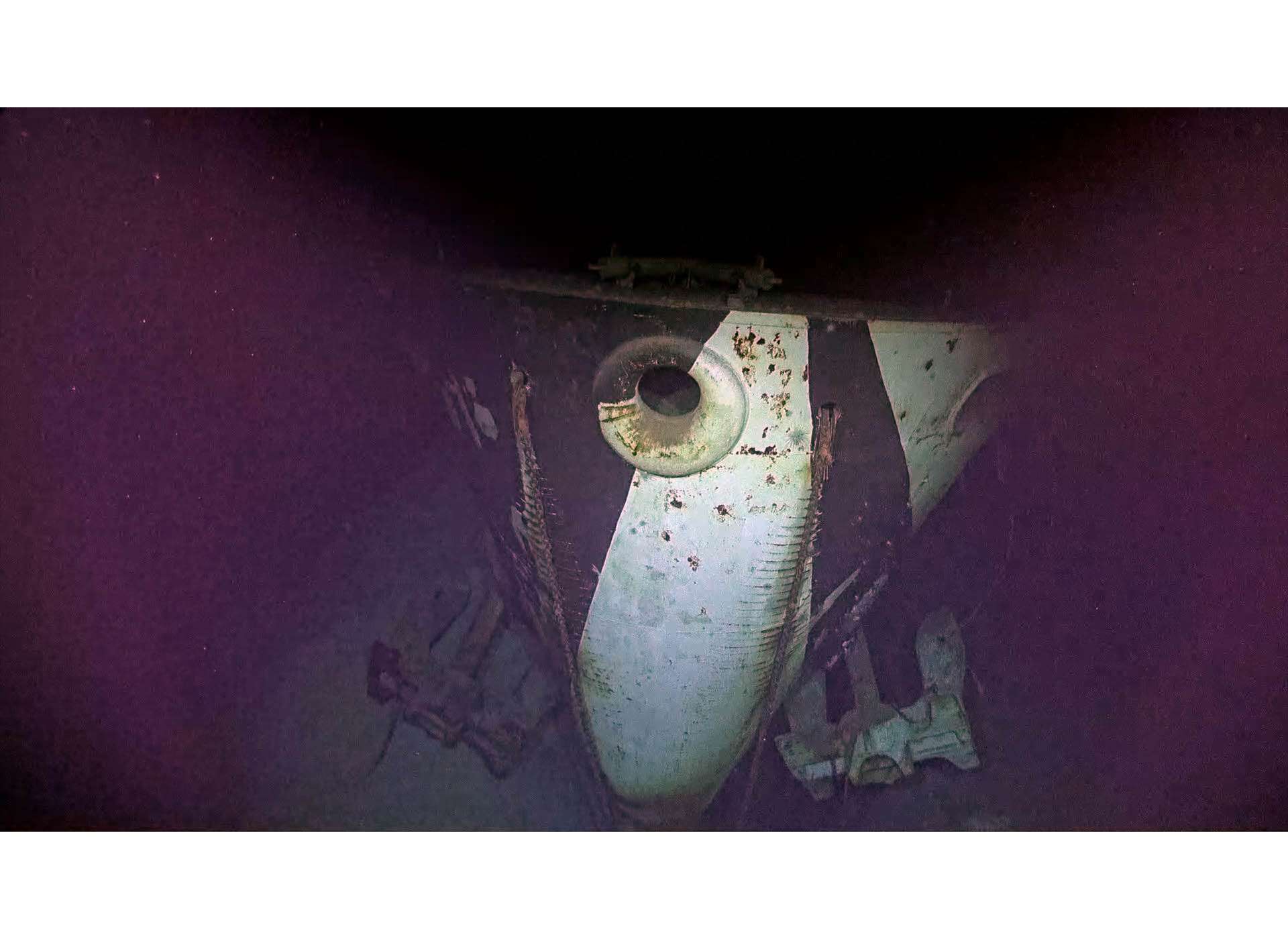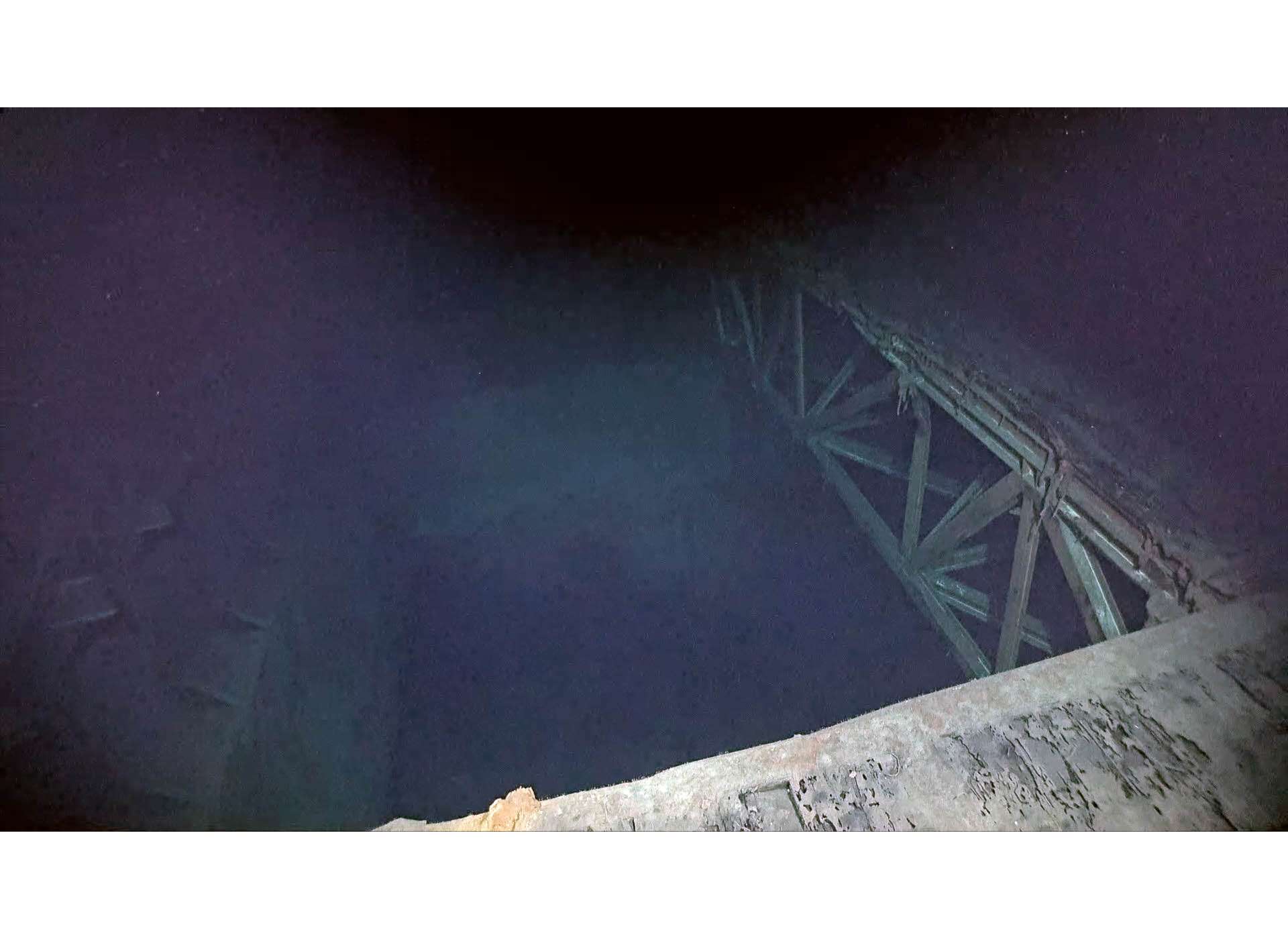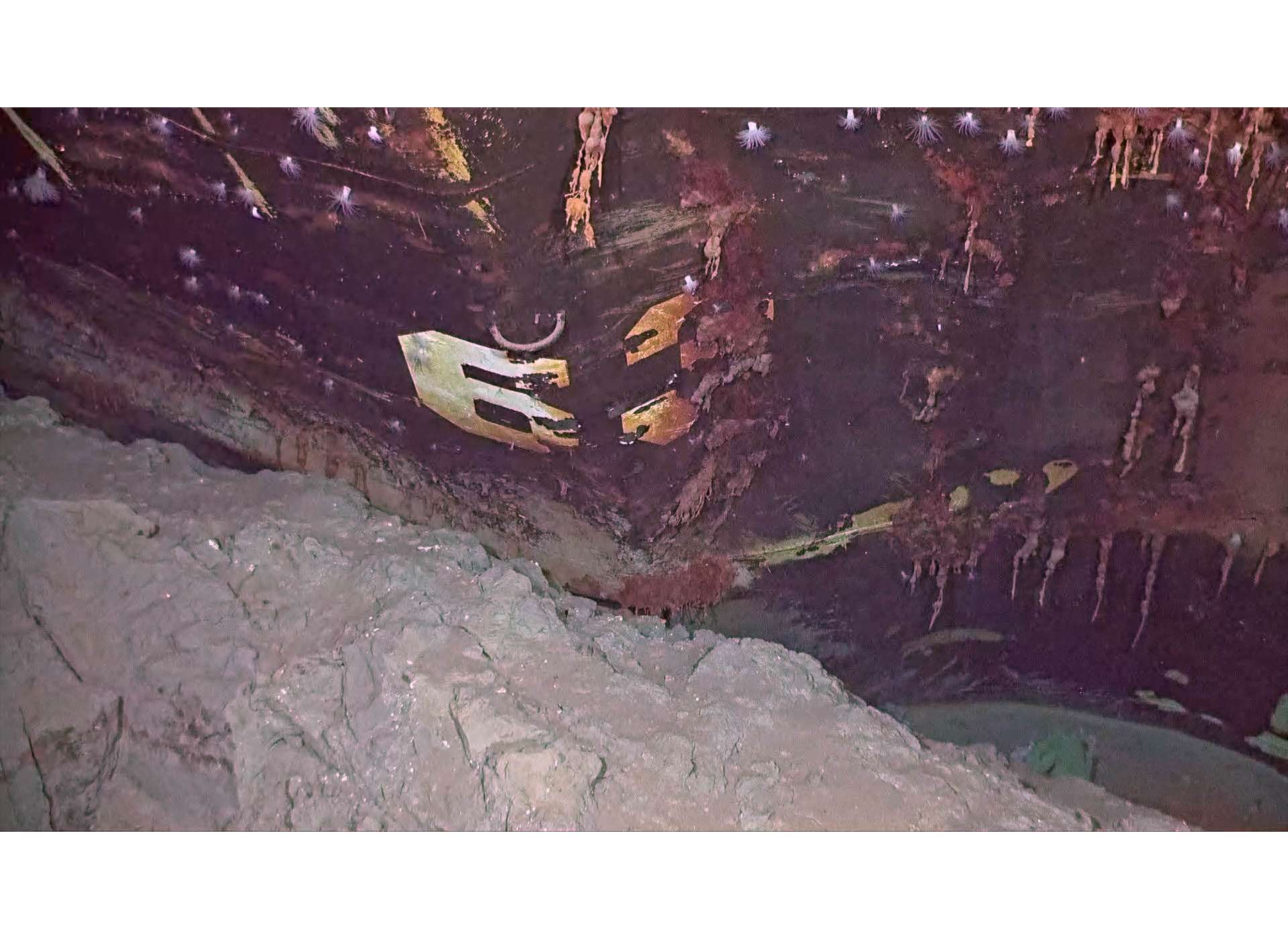Top image: Orville Bethard following boot camp in 1943.
When US Navy servicemember Orville Bethard was assigned to the brand-new aircraft carrier Midway (CVE-63) during World War II, later to be renamed St. Lo, he envisioned a life at sea aboard a vital component of America’s Pacific Fleet. His ship would provide vital air support during invasions of Japanese-held islands, launch its aircraft against the Japanese fleet far over the horizon, and eventually sail victorious into Tokyo Bay. Never in his wildest imagination did he think that he would hear the sound of incoming Japanese naval gunfire and bear witness to the birth of one of the most terrifying weapons Japan deployed during the war.
On the morning of October 25, 1944, the young Electrician’s Mate from Southern California was standing on the flight deck, looking off in the distance for what had been reported by the St. Lo’s antisubmarine patrol as a Japanese fleet approaching his Task Force, Taffy 3, from a distance of 20 miles. As the morning haze began to burn off, distinct shapes began to form on the sea. Bethard recalled, “Our signalman started blinking a message to the ships on the horizon to find out if they were friend or foe and they didn’t answer. And after a few minutes…BOOM! They started shooting at us! Well, then we knew who they were!”
Bethard’s St. Lo and the rest of Taffy 3 had just been intercepted by Japanese Admiral Takeo Kurita’s powerful force of four battleships, eight cruisers, and 12 destroyers. Completely underpowered to fight off a force such as the one approaching, the six escort carriers, three destroyers, and four destroyer escorts were, on paper, no match for the approaching Japanese fleet. Nevertheless, the antisubmarine patrol launched by Bethard’s St. Lo, armed with only depth charges, executed an attack on the lead elements of the approaching enemy fleet. Causing no damage, the American aircraft withdrew under heavy antiaircraft fire.
Bethard could see the Japanese antiaircraft fire on the horizon, and not long after that, heard the report of large naval rifles. The Japanese super battleship Yamato, the largest warship afloat, opened fire with her 18-inch main battery at a distance of 17 miles. Soon, the enormous enemy shells began splashing around the St. Lo and other American ships. Tremendous splashes, vibrantly colored by dye, sprouted along the wakes of the American ships. “When they hit, they had dye in them. Another would be green or blue, or whatever they were, and they could see where they missed and correct for it. Our captain got kinda smart about that and if any of them got close to us, instead of running from it, he would go right into where they just shot and they were correcting and missing us because of that.”
Knowing that just one hit from an enemy battleship could sink his small escort carrier, the St. Lo’s captain drove her in and out of rain squalls to obscure his ship from the eyes peering through Japanese range finders on battleships and cruisers approaching ever closer. Managing to launch all of her aircraft and strike back at the enemy fleet, the St. Lo bobbed and weaved through the torrent of enemy shells. Bethard took refuge in the ship’s upper works, thinking that the Japanese were attempting to hole the flight deck and he would therefore be safe. From his vantage point he could see the enemy ships fire and could sometimes see the enormous battleship shells as they tore through the air. Bethard recalled, “Out of the corner of my eye, here comes three, three big ole shells that went just over the bow. One of the shell casings flopped over on our deck and rocked there for a while, they were that close.”
-

Funnel smoke from USS Kitkun Bay (CVE-71) frames straddle shot on USS Gambier Bay (CVE-73). Note Japanese cruiser on the horizon.
-

Japanese salvos dropping near USS White Plains (CVE-66) as seen from USS Kitkun Bay (CVE-71) during Battle off Samar.
-

USS St. Lo is hit by a Japanese kamikaze during the Battle off Samar on October 25, 1944.
Ninety minutes after the battle began, the Japanese force began to close in. As the range between ships drew ever closer, allowing the American destroyers to open fire, the battle grew in intensity. The gallant American destroyers and destroyer escorts of Taffy 3 closed with their enemy and sparred at frighteningly close range, often as close as 5,000 yards.
At around 7:00 a.m., the destroyer Johnston (DD-557), under the command of Captain Ernest Evans, accelerated to flank speed, pulled full left rudder, and charged the Japanese. Trading shots with the Japanese cruiser Kumano, the Johnston was able to rake the larger ship with gunfire and scored several torpedo hits which blew the bow off the Japanese vessel and narrowly missed the battleship Kongo. As Johnston pulled away from the confused Japanese cruiser force, she was struck by at least two 18-inch shells from Yamato, which slowed the ship considerably. Undeterred, Captain Evans ordered his small ship back into the fray and for a period of over 60 minutes, engaged at least eight enemy ships before his destroyer was fatally struck by enemy gunfire. As the Johnston slowed to a stop, she was surrounded by her enemy and pounded until the order was given to abandon ship. The gallant little ship went down with 186 of her crew, Captain Evans among them. For his actions in commanding the Johnston, Evans would be awarded the Medal of Honor. Survivors floating in the water later stated that as the Japanese destroyer Yukikaze steamed by, her captain could be seen saluting the sinking American destroyer.
Through the actions of the Johnston and the heroic sacrifices of the crews of the destroyer escort Samuel B. Roberts (DE-413), and destroyers Heermann (DD-532) and Hoel (DD-533), the majority of Taffy 3 was able to escape. Believing they had run into the majority of the American fleet due to the ferocity of the destroyer and destroyer escorts’ defense, the Japanese retreated. Elated as the Japanese pulled away, sailors aboard the surviving American ships breathed a sigh of relief. For the St. Lo, however, her ordeal was about to begin.
Following the gun battle, Bethard made his way below decks to get breakfast, and like many of his shipmates, felt safe as the Japanese fleet disappeared over the horizon. As he made his way below, the ship’s general quarters alarm screamed. He recalled, “I stepped back outside and looked around wondering where that Jap fleet was. And there was no Jap fleet. Out of a rain squall came one lone airplane. And this plane came in and I saw that meatball on the side of it so I knew it was Japanese.”
The Japanese airplane was an A6M5 Zero fighter, part of a special Japanese task force named the Shikishima Special Attack Unit. This special attack unit was the first designated kamikaze unit of the war. Over the next 40 minutes, the escort carriers of Taffy 3 came under a furious kamikaze attack. Several of the escort carriers were damaged by the new and terrifying weapon, including Bethard’s St. Lo.
The Japanese Zero that Bethard saw closing on his ship was carrying a bomb, which it dropped, before it crashed into the flight deck of the St. Lo. The bomb “went through the wooden flight deck that we had and exploded in the hangar deck. And then he crashed his plane on the deck…and that explosion on the hangar deck…we blew ourselves apart from there because were gassing up planes, bombs out, no real protection, fire…the torpedo bay blew.”
The St. Lo was rocked by fierce explosions as her aircraft munitions cooked off from the intense heat of the initial explosion of both the Japanese bomb and the suicide plane. Still, her crew was determined to fight the fires and save their ship. According to the after-action report following the first explosion, a second explosion blasted through the ship and was then “followed in a matter of seconds by a much more violent explosion, which rolled back a part of the flight deck…The next heavy explosion tore out more of the flight deck and also blew the elevator out of its shaft.” The St. Lo was finished.
Ordered to abandon ship, Bethard hauled himself down a line over the starboard side of the ship and dropped into the ocean. As he swam away from the ship, another explosion occurred which allowed the water to pour into the bowels of the escort carrier. St. Lo, now engulfed in flame, began to settle by the stern, slowly listing port before finally capsizing and sinking, thus earning the title of first American ship to be sunk by kamikaze attack. Unfortunately, St. Lo would not be the last ship to fall victim to the “divine wind” before war’s end.
-

40 mm antiaircraft gun. Image: Paul G. Allen's Vulcan Inc.
-

Explosion damage to St. Lo’s starboard side. Image: Paul G. Allen's Vulcan Inc.
-

Officers Country. Image: Paul G. Allen's Vulcan Inc.
-

One of St. Lo’s 20 mm Oerlikons visible near hand-painted warnings to her crew. Image: Paul G. Allen's Vulcan Inc.
-

St. Lo’s bow. Image: Paul G. Allen's Vulcan Inc.
-

St. Lo’s camouflaged-painted bow lies some 4,376 meters beneath the surface. Image: Paul G. Allen's Vulcan Inc.
-

St. Lo’s forward elevator leaves a cavernous hole in her flight deck. Image: Paul G. Allen's Vulcan Inc.
-

St. Lo’s hull number 63 clearly visible. Image: Paul G. Allen's Vulcan Inc.
Orville swam as far away from St. Lo as he could, eventually being picked up by the destroyer escort Dennis (DE-405), one of 746 survivors of a crew of 889 men. After the war, Orville returned to Southern California, got married, had two daughters, and acquired a degree in engineering from USC in 1956. Bethard passed away in 2012.
For nearly 75 years, Bethard’s ship, the St. Lo, lay somewhere off the coast of the Philippine island of Samar, unseen by human eyes. That changed on May 14, 2019. Undersea explorers aboard Paul G. Allen’s Research Vessel Petrel found Bethard’s ship lying upright some 4,376 meters beneath the surface of the Philippine Sea. Her scars from the battle are evident when you see her, portions of her hull are blown out from the explosions she suffered, her flight deck bares a cavernous hole, and some of her antiaircraft armament is spread about the sea floor. Yet, she sits solidly on her keel, defiant and proud. Vestiges of her crew can be seen in images that read, “Keep Clear during Landings”, reminding us that the vessels discovered by RV Petrel were once occupied by some of the bravest men ever put to sea.
Seth Paridon
Seth Paridon was a staff historian at The National WWII Museum from 2005 to 2020. He began his career conducting oral histories and research for HBO’s miniseries The Pacific and holds the distinction of being the first historian hired by the Museum’s Research Department. In the 12 years he was Manager of Research Services, Seth and his team increased the oral history collection from 25 to nearly 5,000 oral histories.
Cite this article:
MLA Citation:
APA Citation:
Chicago Style Citation:

